Secret Forces & Gnosis
 |
 |
 |
 |
 |
 |
 |
Analyzing Reiki & Yoga - I
Reiki: A False Spiritual Healing
that Excludes God
The art of spiritual healing massage and the transmission of energy are some of the characteristics associated with “Reiki” (pronounced RAY-kee), a kind of “alternative medicine” of Japanese origin that has been accepted in recent times in some Catholic hospitals and retreat centers in the United States. Reiki “masters” claim that by laying hands on or above a sick or injured person, they can draw universal healing energy into the person.
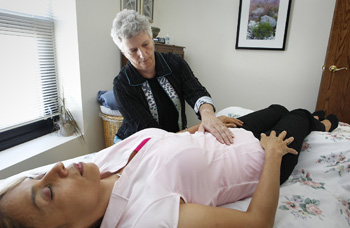
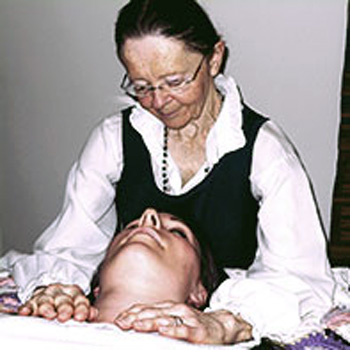 This has led the American Bishops Conference to publish a document entitled “Guidelines for Evaluating Reiki as an Alternative Therapy,” warning of the dangers of this practice.
This has led the American Bishops Conference to publish a document entitled “Guidelines for Evaluating Reiki as an Alternative Therapy,” warning of the dangers of this practice.
The document begins, “The Church recognizes two kinds of healing: healing by divine grace and healing that utilizes the powers of nature,” (§ 2) options that do not exclude each other. On the contrary, Reiki therapy “finds no support either in the findings of natural science or in Christian belief.” (§ 10)
Reiki is a Japanese word comprised of two parts: Rei which means “energy of the universe” and Ki, meaning “life force energy.” It signifies, therefore, “universal life energy.” Reiki followers portray it as an art of natural healing by which “energy” or “love” is transmitted through the “laying on” of hands. Reiki says nothing about God and asks nothing of God: simply a “force” is exerted.
The Bishops remind Catholics of the fact that “access to divine healing is by prayer to Christ as Lord and Savior” and in no other way. Therefore, since there is no justification for the healing in either faith or science, “a Catholic who puts his or her trust in Reiki would be operating in the realm of superstition, the no man’s land that is neither faith nor science.” (§ 11)
The document calls on priests and lay faithful to renounce such superstition, because it “corrupts the worship of God turning one’s religious feeling and practice in a false direction.” (§ 11)
The text concludes that “would be inappropriate for Catholic institutions, such as Catholic health care facilities and retreat centers or persons representing the Church, such as Catholic chaplains, either to promote or to provide support for Reiki therapy.” (§ 12)
The invisible threat of the ‘New Age’
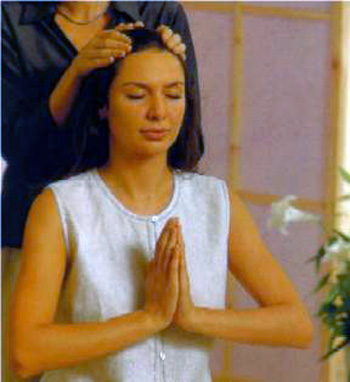 The practice of Reiki is framed within the context of New Age therapies and beliefs.
The practice of Reiki is framed within the context of New Age therapies and beliefs.
Many persons who find science or institutional religion too intellectual and cold, seek alternatives in these more emotional and individualistic practices.
Reiki also includes many elements of the occult and magical thinking, which seek to use and control impersonal energies, something very different from the Catholic Religion. The latter deals with a personal God who one cannot control and insists on man’s vocation to serve God and his neighbor.
The insistence of Christianity on service, accountability and answering to a personal God does not sit well with today’s narcissistic and egocentric civilization, fertile ground for the New Age movement.
Reiki’s pantheist roots (1)
In the article “Reiki, not for Catholics. Not now, not ever,” Mary Ellen Barrett relates the occult origin of Reiki. She notes that it was founded in Japan in the late 1800s by a man named Mikao Usui, a businessman interested in arts, medicine, Buddhism and a member of the Rei Jyutu Ka, a metaphysical group dedicated to developing psychic abilities. She continues:
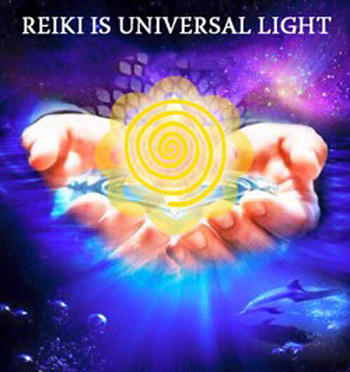 “It is said that in a difficult period of his life when his business was failing and he was feeling spiritually empty, Usui was atop Mount Kurama fasting and suddenly received a ‘great Reiki’ over his head. He was, then, infused with the Reiki, was healed spiritually and acquired the Reiki cure.”
“It is said that in a difficult period of his life when his business was failing and he was feeling spiritually empty, Usui was atop Mount Kurama fasting and suddenly received a ‘great Reiki’ over his head. He was, then, infused with the Reiki, was healed spiritually and acquired the Reiki cure.”
From whom he received this “gift” is not mentioned, but since it was clearly not from God, it is not difficult to realize it was from a preternatural source, the Devil. In 1922, he opened a center for training and cures in Reiki practice in Tokyo. All practitioners of Reiki must go through an initiation by a master to learn the hands-on healing practices. Barrett continues:
“It is interesting to note that the techniques for laying on hands are taught by Reiki Masters but the Reiki itself, the healing force, is said to be passed from teacher to student via an ‘attunement,’ which opens up a well of life force energy. People who have experienced attunement report undergoing such altering life changes as having their third eye opened, increased psychic abilities, releasing of negative feelings and energy and, oddly, a change in food preferences. ...
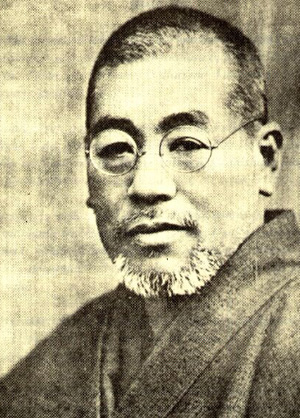 “Like many New Age practices Reiki is merely a hijacked Eastern philosophy with Pantheistic roots, some elements of Christian doctrine and a dash of self-deification. The story of Mikao Usui climbing a mountain and returning with supernatural powers is designed to evoke the 40 days Jesus spent in the desert before His death, or Moses’ time in the desert or Mohammed’s. Even the idea of passing the power along in a formal attunement takes liberally from the apostolic succession of the Catholic Church.
“Like many New Age practices Reiki is merely a hijacked Eastern philosophy with Pantheistic roots, some elements of Christian doctrine and a dash of self-deification. The story of Mikao Usui climbing a mountain and returning with supernatural powers is designed to evoke the 40 days Jesus spent in the desert before His death, or Moses’ time in the desert or Mohammed’s. Even the idea of passing the power along in a formal attunement takes liberally from the apostolic succession of the Catholic Church.
“In using the familiar concepts and terminology of legitimate religious traditions, the Reiki master makes people of faith comfortable with a practice that defies logic and is at a cross purpose with the practice of Christianity. This life force of which they speak can be likened to the Christian doctrine of the soul.
"While we, as Catholics, ... do not believe that the soul is moveable from one to another, nor is it a healing force. Our doctrine calls for healing of a soul through confession, prayer, spiritual direction, reception of the Blessed Sacrament and the like. The soul itself does not heal. Rather it enables us to seek the healing grace provided by God through the Sacraments.”
Continued

This article by Pablo Breijo was first publishedin Spanish on
ReligionenLibertad on August 18, 2012

Despite the Church condemnation, many nuns like Sr. Gianforte, above, and Sr. Eileen Curteis, below, continue to practice Reiki as ‘masters’

The document begins, “The Church recognizes two kinds of healing: healing by divine grace and healing that utilizes the powers of nature,” (§ 2) options that do not exclude each other. On the contrary, Reiki therapy “finds no support either in the findings of natural science or in Christian belief.” (§ 10)
Reiki is a Japanese word comprised of two parts: Rei which means “energy of the universe” and Ki, meaning “life force energy.” It signifies, therefore, “universal life energy.” Reiki followers portray it as an art of natural healing by which “energy” or “love” is transmitted through the “laying on” of hands. Reiki says nothing about God and asks nothing of God: simply a “force” is exerted.
The Bishops remind Catholics of the fact that “access to divine healing is by prayer to Christ as Lord and Savior” and in no other way. Therefore, since there is no justification for the healing in either faith or science, “a Catholic who puts his or her trust in Reiki would be operating in the realm of superstition, the no man’s land that is neither faith nor science.” (§ 11)
The document calls on priests and lay faithful to renounce such superstition, because it “corrupts the worship of God turning one’s religious feeling and practice in a false direction.” (§ 11)
The text concludes that “would be inappropriate for Catholic institutions, such as Catholic health care facilities and retreat centers or persons representing the Church, such as Catholic chaplains, either to promote or to provide support for Reiki therapy.” (§ 12)
The invisible threat of the ‘New Age’

An initiation into one of the three degrees of Reiki
Many persons who find science or institutional religion too intellectual and cold, seek alternatives in these more emotional and individualistic practices.
Reiki also includes many elements of the occult and magical thinking, which seek to use and control impersonal energies, something very different from the Catholic Religion. The latter deals with a personal God who one cannot control and insists on man’s vocation to serve God and his neighbor.
The insistence of Christianity on service, accountability and answering to a personal God does not sit well with today’s narcissistic and egocentric civilization, fertile ground for the New Age movement.
Reiki’s pantheist roots (1)
In the article “Reiki, not for Catholics. Not now, not ever,” Mary Ellen Barrett relates the occult origin of Reiki. She notes that it was founded in Japan in the late 1800s by a man named Mikao Usui, a businessman interested in arts, medicine, Buddhism and a member of the Rei Jyutu Ka, a metaphysical group dedicated to developing psychic abilities. She continues:

From whom he received this “gift” is not mentioned, but since it was clearly not from God, it is not difficult to realize it was from a preternatural source, the Devil. In 1922, he opened a center for training and cures in Reiki practice in Tokyo. All practitioners of Reiki must go through an initiation by a master to learn the hands-on healing practices. Barrett continues:
“It is interesting to note that the techniques for laying on hands are taught by Reiki Masters but the Reiki itself, the healing force, is said to be passed from teacher to student via an ‘attunement,’ which opens up a well of life force energy. People who have experienced attunement report undergoing such altering life changes as having their third eye opened, increased psychic abilities, releasing of negative feelings and energy and, oddly, a change in food preferences. ...

Buddhist Mikai Usui received the occult ‘gift’ of Reiki on a mountain
“In using the familiar concepts and terminology of legitimate religious traditions, the Reiki master makes people of faith comfortable with a practice that defies logic and is at a cross purpose with the practice of Christianity. This life force of which they speak can be likened to the Christian doctrine of the soul.
"While we, as Catholics, ... do not believe that the soul is moveable from one to another, nor is it a healing force. Our doctrine calls for healing of a soul through confession, prayer, spiritual direction, reception of the Blessed Sacrament and the like. The soul itself does not heal. Rather it enables us to seek the healing grace provided by God through the Sacraments.”
Continued
- From this point on, the text is a contribution made by the TIA desk to the article by Pablo Breijo.

Posted April 18, 2016
ReligionenLibertad on August 18, 2012
______________________
______________________
 Volume I |
 Volume II |
 Volume III |
 Volume IV |
 Volume V |
 Volume VI |
 Volume VII |
 Volume VIII |
 Volume IX |
 Volume XI |
 Special Edition |
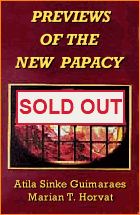 Special Edition |


